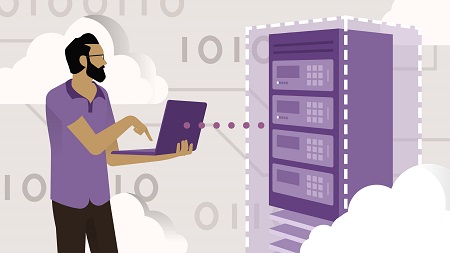
English | MP4 | AVC 1280×720 | AAC 48KHz 2ch | 2h 28m | 302 MB
Virtual private clouds (VPC) are the heart of your AWS network. They connects AWS resources, route traffic, and provide security. To get started on AWS, you first need to create a VPC. In this course, instructor Mark Wilkins teaches VPC networking on AWS using a use case scenario for a company that hopes to move an on-premises app to the cloud using a multitier software-defined data center at AWS. Mark takes you through the example step by step: from defining the VPC and choosing regions and availability zones, to creating subnets, configuring custom route tables, assigning IP addresses, and creating security groups to control access. In addition, learn about setting up private and public connections, including an internet gateway; monitoring your VPC activity; and setting up identity and access management and compliance controls. By the end of this course, you should have the knowledge necessary to set up your own VPCs to deploy two- and three-tier applications on the AWS cloud.
Topics include:
- Creating a VPC
- Creating subnets
- Default and custom route tables
- IP addressing
- Creating security groups
- Configuring an internet gateway
- Peering VPCs together
- Sharing VPC resources
- Creating flow logs for monitoring
- Controlling access with IAM roles
- Dedicated tenancy
- Using automation for compliance
Table of Contents
Introduction
1 Designing a software-defined data center at AWS
2 What you should know
3 H+Sports use case
VPC Architecture
4 Defining the VPC
5 Deep dive Packet flow
6 AWS regions
7 AWS Availability Zones
8 Availability Zone considerations
9 AWS costs
10 AWS Regions and Availability Zones
11 Planning for fault tolerance, and high-availability
Creating VPCs
12 VPC design choices
13 Create a VPC
14 The default VPC
Creating Subnets
15 Reasons to create subnets
16 Creating subnets
17 Route tables
18 The master route table
19 Custom route table
IP Addressing
20 Public and private IP addresses
21 Order an Elastic IP address
22 Hosting public IP addresses at AWS
23 Order BYOIP
VPC Security
24 VPC security options
25 Security groups
26 Security group design
27 Create a custom network ACL
28 Network ACLs
29 Create security groups
30 Designing packet flow with security groups
VPC Public Connectivity
31 Internet gateway services
32 Order and configure an internet gateway
33 Egress-only internet gateway
34 Add an Egress-only internet gateway
35 NAT services
36 Adding NAT services
VPC Private Connectivity
37 VPC peering
38 Peering VPCs together
39 Sharing VPC resources
40 Sharing resources with RAM
41 Private endpoints
42 Gateway and interface endpoints
43 VPN connections
VPC Compliance
44 Monitoring with Flow Logs
45 Deploying a network stack with CloudFormation
46 Create flow logs
47 Controlling access with IAM roles
48 Creating IAM roles for cross-account access
49 Dedicated tenancy VPC
50 Creating a dedicated tenancy VPC
51 VPC soft limits
52 Requesting a service limit increase
53 Using automation for compliance
Conclusion
54 Next steps
Resolve the captcha to access the links!